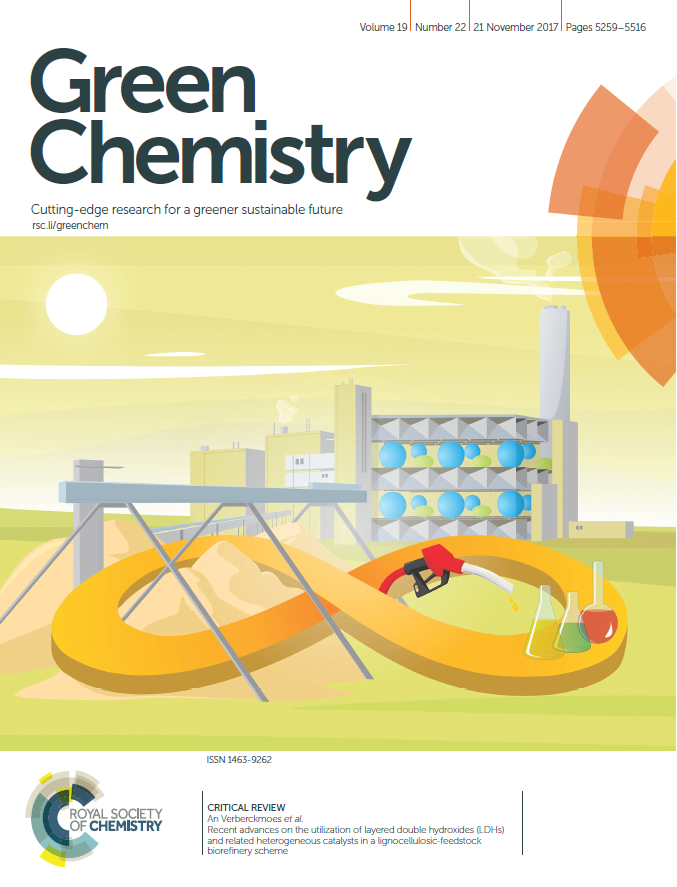A critical review by the COMOC and INCAT group on recent advances on the utilization of layered double hydroxides (LDHs) and related heterogeneous catalysts in a lignocellulosic-feedstock biorefinery scheme was published on the cover of Green Chemistry.
According to the biorefinery concept, biomass is processed instead of petroleum for the production of bio-fuels and chemicals. Lignocellulosic feedstock such as hard and soft wood, wheat straw, switchgrass, etc. is the most abundant and cheapest inedible biomass source, making it one of the most interesting feedstocks in terms of scalability and economic opportunities. Chemical and/or catalytic routes are required to valorize the different fractions which can be obtained after pretreatment of the lignocellulosic feedstock (i.e. cellulose, hemicellulose and lignin). Layered double hydroxides (LDHs) and derived materials have been widely used as heterogeneous catalysts for different types of reactions and are one of the three main catalyst families which already play a relevant role in several biomass valorization processes.
The authors aim to revise and critically assess the most relevant literature reports related to the utilization of LDHs and derived catalysts in the transformation of lignocellulosic biomass. This critical review is linked with the Catalisti Biovertol project on the sustainable synthesis of branched alcohols from bio-based raw materials.
Reference to the full paper: Green. Chem. 2017, 19, 5269
Recent advances on the utilization of layered double hydroxides (LDHs) and related heterogeneous catalysts in a lignocellulosic-feedstock biorefinery scheme
Willinton Y. Hernández, Jeroen Lauwaert, Pascal Van Der Voort and An Verberckmoes*

